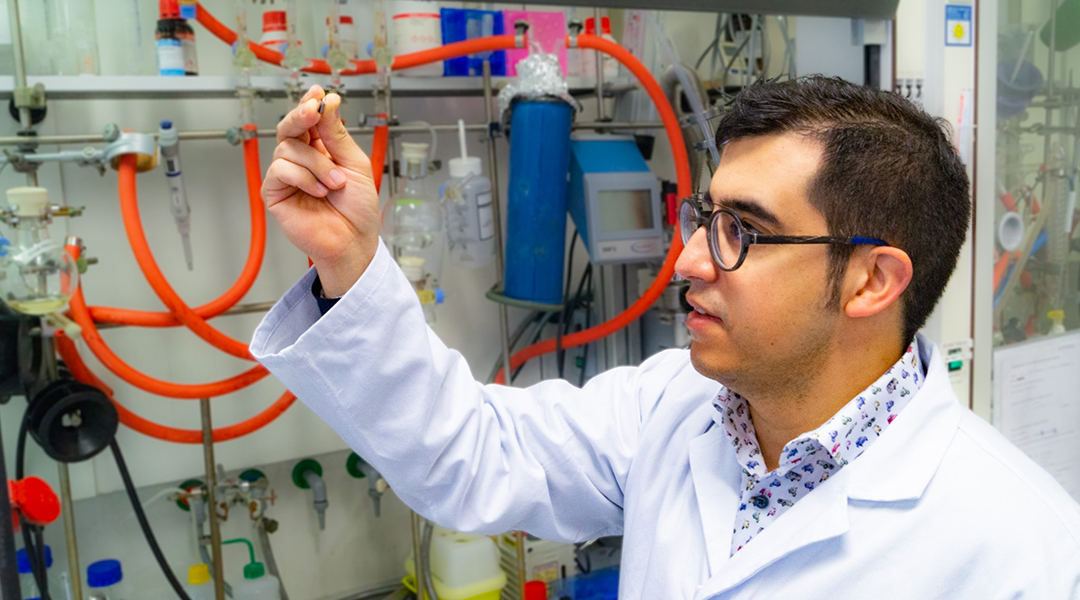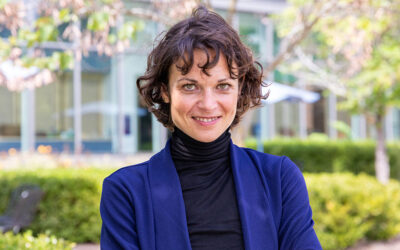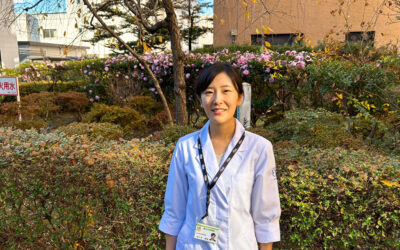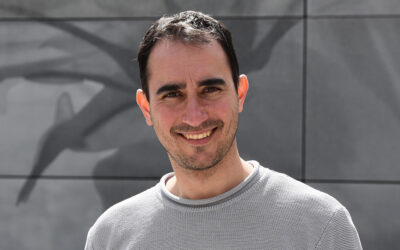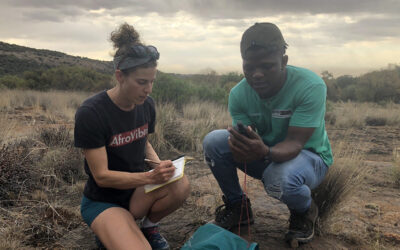César Rodriguez-Emmenegger is searching for a way to communicate with living systems by developing adaptive surfaces that can interact with elements in a biological environment, be it cells, our body’s immune system, or the blood.
At the interface of biology and chemistry, Rodriguez-Emmenegger has assembled an interdisciplinary team that he nurtures through collaboration, creativity, an open-door policy, and countless lessons learned from his own mentors.
Rodriguez-Emmenegger — recent recipient of the Macromolecular Rapid Communications Junior Researcher Award — spoke with us about his colorful career, choosing the right mentors, and how his work in targeted cellular communication will help shape the future of medicine.
Can you tell us a bit about your background? Where did you grow up?
I was born on a farm in the very north of Uruguay, in a small town called Salto. My father is a farmer, and my mother is a primary school teacher. As a child, I was always very restless and misbehaved. When everyone took a siesta in the scorching Uruguayan summers, I would disappear to disassemble things that I hardly ever put back together, trying to find out how they function.
I remember being very curious, constantly asking why or how things worked, and I think my parents quickly understood that I was leaning towards something different than working on a farm — or perhaps they were so fed-up with my questions that they wanted to find some distraction for me. From that point on, they have been very supportive of my brother and I so that we could get the education that they did not have — they perceived it as a means to progress and achieve a path towards happiness.
Fast-forward many countries, years, and a bit of a roller-coaster experience later, and I became a scientist working on biointerfaces and synthetic cells. I am planning to expand and strengthen my group with the move from Aachen, Germany, to the more biomaterial- and biological-oriented Institute of Bioengineering of Catalonia, Barcelona, Spain, as an ICREA Professor. This is quite a different life than what I imagined when driving a tractor or milking cows on my parents’ farm.
Did you have any formative experiences that led you to pursue your career?
As a kid, I wanted to become a surgeon, and I was sure I would study medicine, but my life took a bit of a detour when I was walking down a corridor in secondary school and I saw an advertisement for the Chemistry Olympiad, which is a chemistry competition for students at the high school level. I applied to participate in the regional competition, and the very day I set foot in a chemistry lab, I was completely hooked. I felt it was my way to express my creativity and passion for finding out why and how things work. Through the simple experiments I could perform at that time, I immediately felt that I wanted to be a scientist; although I actually did not understand what a scientist was at the time.
The Chemistry Olympiad also gave me a unique opportunity to learn that we are citizens of the world. In the international events, I met wonderful people from all over, from completely different cultures, religions, and backgrounds. I realized that we had much more in common beyond any superficial differences.
A few years later, I was standing in General Flores Avenue in Montevideo, confronted with a critical decision. On the left-hand side was the faculty of medicine (my childhood dream), and on the right-hand side, the faculty of chemistry, my new love. It represented the big decision I needed to make, and as I turned to the right, I hoped it was the right one.
Did you have any other important figures or mentors that helped guide you?
I have been blessed to meet very special people at the right moments of my life. Firstly, my parents and grandmother have been key to who I am by teaching me core values such as hard work, being honest, and caring about people, which I try to apply every day.
I feel gratitude that I have had five very important mentors: José Caiazzo, William Stebniki, Aldo Bologna Alles, Eduard Brynda, and Virgil Percec who greatly influenced who I am today. All of them appeared at different stages of my career and offered very generous guidance.
Let me tell you some funny stories about my encounters with two of them:
One day, I was daydreaming in a class on thermodynamics, and the class’ professor — Aldo Bologna Alles, who is one of the best lecturers I have met — saw me not paying attention. He came over and kicked my leg! Can you imagine? Then, he told me to come by his office after class.
I was terrified because he was famous for being very strict. Things actually went in a very unexpected direction. He invited me to join his group! This was amazing; I had access to a research lab again to do science. But what I did not know at that point was that moment was in fact the single most important step of my career, as Aldo became the most influential person in my life — like a second father and mentor.
He has supported me greatly during my career. With him, I learned that there is nothing more important than the people that work with you, especially those you mentor. I also learned the importance of giving people the freedom to be creative, resilient, and pragmatic when experiments do not go as planned. Ultimately, there is always an important lesson to learn. He also encouraged and supported me in going abroad for my Ph.D.
I always tell my students to keep their eyes open for these kinds of people. They are rare, but they can make huge contributions to your life if you are open to welcoming them.
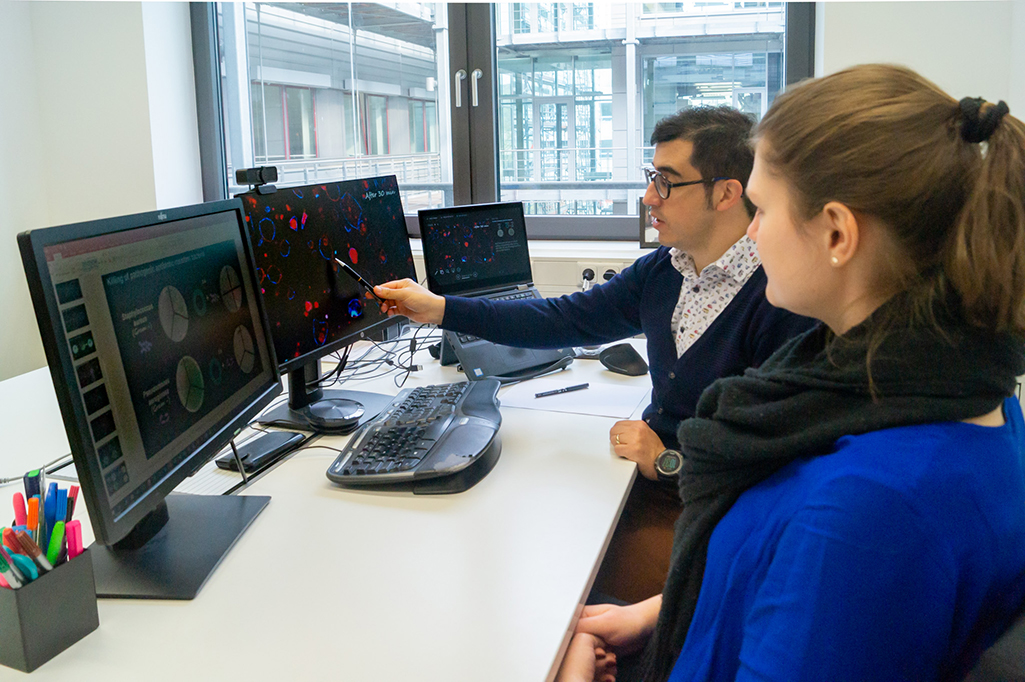
The second story is about when I met Virgil Percec. Everybody knows him as an amazing scientist, but I want to talk about him as a person. I met him at a conference in Prague where he was a plenary speaker. There were lots of famous scientists at the conference, yet he chose to discuss science while having a glass of wine with the very junior Ph.D. student I was at that time. That gave me a great impression of him. Through the many years I have known him, he has demonstrated again and again how much he cares about elevating the next generation of scientists by mentoring them and teaching them to be creative, hardworking, and having passion for what they do. It is not strange to receive a phone call from him asking about “great news” from the lab. These are things I admire in him.
I try to apply what I have learned from my mentors, and I think that it has worked well. Usually, I have my door open and my students are welcome to come in and discuss science — in fact, it gives me an immense thrill to discuss and argue science with them. This has allowed us to do our work in a very productive and creative manner and grow together as team. Although others may say the students have stayed with me because of my Uruguayan barbecuing style, I prefer to think that it is because they like my mentoring.
Were there any other obstacles or challenges you’ve faced? How did you overcome them?
There is always a fine line between being passionate and overworking. The former can be a great drive to achieve things, but it may also be dangerous. In science, we are often ranked and compared to our peers based on productivity, how many articles, conferences, how many hours, etc. This often leads to overwork and burnout.
I am not a stranger to that and had struggled to find the proper balance. For example, I wanted to obtain a postdoctoral fellowship starting almost immediately after my Ph.D. defense, so I worked on my thesis, my defense, and the fellowship all at the same time, while also writing a publication. I was so exhausted from the stress and long hours that I could hardly say my name the night before my defense.
That is definitely a very wrong approach that impacts your creativity and health. So now, being on the other side of the desk, I try to advise my students against that.
In my personal life, the way I try to counteract this tendency is to actively introduce other activities into my life that are interesting to me and give me the ability to relax, such as cycling or cooking. It’s beneficial because sometimes I get ideas that I can apply to my work during these activities. In addition, now that I have a small daughter, I try to include her in my hobbies; for example, by attaching a child seat to the handlebar of my bike.
Did having a child impact you in a way you did not expect?
The birth of Celia has been very transformative. I feel things that I have not felt before. I was told about that on many occasions, which I always disregarded because I am usually somewhat hard. Yet, she somehow managed to soften me in many ways, which might be good for me as a mentor.
What advice would you give to aspiring scientists?
Be passionate, creative, bold, and love what you do. Find a lab where you have the freedom to explore and the guidance to grow. My Ph.D. time was one of the most incredible times of my life, especially having excellent people as advisors. This is a unique opportunity to grow as a scientist but, more importantly, as a person.
In this regard, it is very important for young scientists to think very carefully when picking their mentor. Choosing a big name or an institute with the best equipment is not always a good approach because most important is the feeling of trust, support, and being happy, having the freedom to develop your research and make mistakes. In this type of environment you will be able to do great things and blossom as a person.
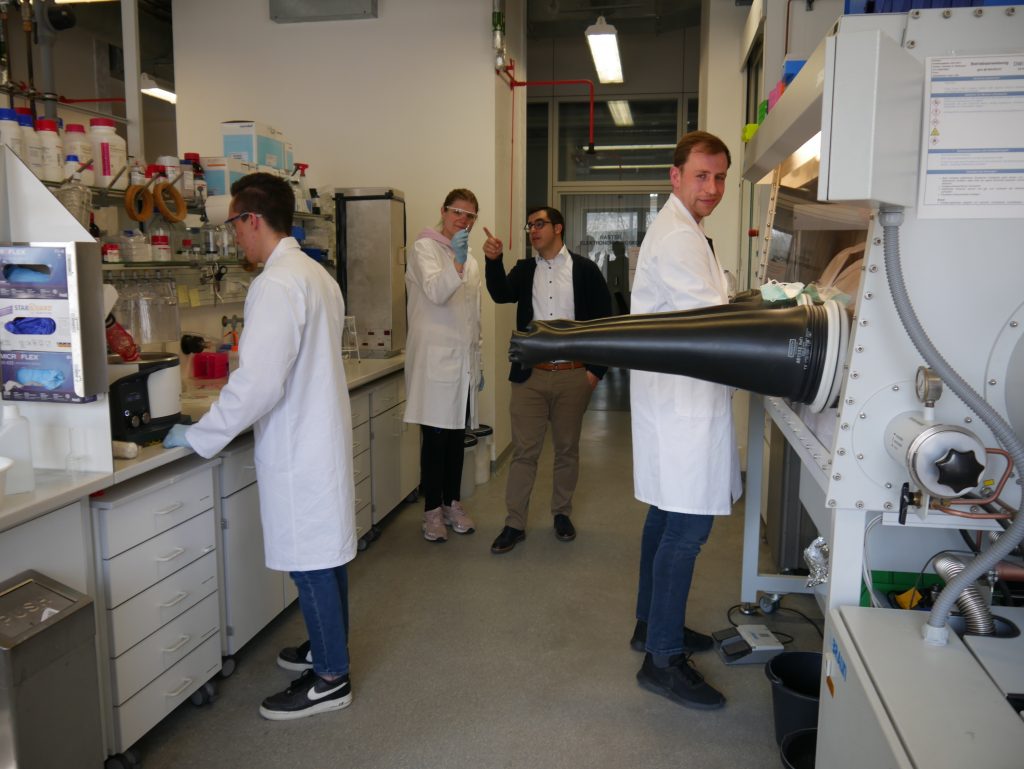
Can you tell us a bit about your current researcher endeavors? What excites you most?
A key concept that defines living systems is their ability to communicate. One cell to another cell, one organism to another. I am not a biologist, but I think as chemists, we can do a lot with the knowledge of how biological signals are transferred.
My group’s goal is to develop synthetic materials capable of communicating with living matter, such as pathogens, cells, and tissues, directing their behavior in a self-regulated manner to enable new biomaterials, therapeutics, and medical devices. For example, just imagine materials that can tell cells when it’s time to proliferate or differentiate into another type of tissue or enter apoptosis. That would give us excellent tools for medicine.
Towards this aim, we are trying to understand and draw inspiration from nature’s blueprints to use them as design principles. As macromolecular chemists, we synthesize macromolecules with control in their size, composition, architecture, and topology, and utilize them as molecular “lego” to build materials.
Here are two recent examples: Blood flows inside vessels coated with a single layer of endothelial cells that line the interior surface of blood vessels. This interface communicates with the blood and checks its state. In case of damage to a vessel, it activates coagulation to form a clot plug to prevent a hemorrhage. There is an exquisite balance in these interactions. But, as soon as blood contacts any other surface, such as that of a foreign, implanted device, this balance is broken, and activation of coagulation begins. This affects many medical devices, and in some cases, it has devastating effects for the patient, such as embolisms or strokes when one of these clots is released to circulation.
Here, my team is putting forward a new concept, which we have termed “adaptive hemocompatibility”, where we try to capture the essence of this blood–endothelium communication to reconstruct it with non-natural or hybrid building blocks. These are nanoscale coatings that provide a cloak of invisibility to conceal the presence of the material beneath, such as a medical device implanted in the body. Like the endothelium, they exploit biomolecular interactions to “listen and talk” to the blood. For instance, they can sense the onset of coagulation and stop it before it self-amplifies or hijacks the blood fibrinolytic systems’ ability to digest clots that are invisible to the naked eye.
Another field we are very active in is developing quasi-living synthetic cells to perform nature-inspired (but not necessarily natural) functions. For example, we are designing phagocytic synthetic cells that are capable of detecting, engulfing, and killing a pathogen and simultaneously enclosing its cytotoxic debris. These are biomimetic synthetic vesicles decorated with receptors that bind bacteria or viral particles. When the receptors of the phagocytic synthetic cells bind to a pathogen, the energy gain drives the engulfment without the need for any external input, which may open a new paradigm to fight pathogens. This is similar to how macrophages eat up bacteria, where the binding sets the phagocytosis in motion.
I like to think about them as little soft matter microrobots that could be the last line of defense against antibiotic-resistant strains of bacteria. And because we are not using any drugs, we are not causing any resistance. I am excited to develop these systems further and hopefully translate them to medical devices or as prophylactics agents.
What do you consider exciting developments in your field in the last five years?
The focus on the water-solubility accounts for the unique aspects of assembly in aqueous environments, where van der Waals interactions are complemented by hydrophobic interactions, strong solvation energies, and Coulomb forces between ions. In recent years, controlled polymerizations have given us excellent tools to accomplish this. Especially the new advances in these polymerizations in aqueous media allow for building complex hydrophilic and amphiphilic macromolecules, like those in nature, that were not accessible long ago.
Of course, we are still far from nature’s precision, but we are moving forward.
What future discovery or achievement would you most like to see?
I think an extremely important question that has to be pursued is the transition from inanimate to living systems. When and how does chemistry become biology? I am very excited to see that there are scientists coming together to address this question.
It’s an incredible endeavor that requires people from all fields, including social sciences, because we also need to try to understand what this means from an ethical perspective. I believe this will have enormous implications in medicine, biomedicine, and bioengineering. I think that with our work on synthetic cells, we are also contributing to this field.
I am looking forward to what the future will bring, and I believe I might be able to see it in my lifetime.

